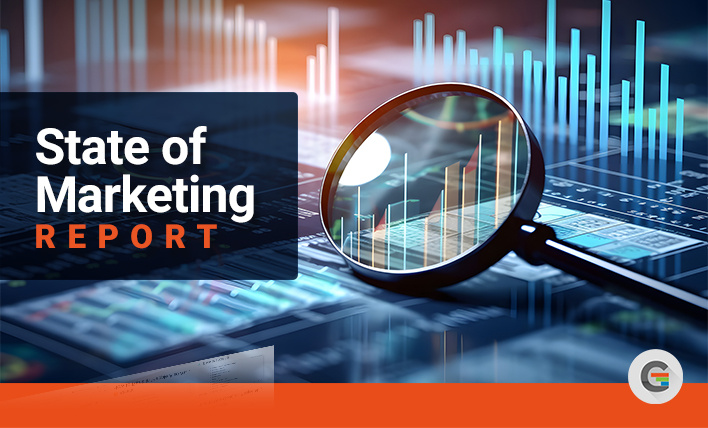Why Some CEOs Give Marketing a Blank Check

Joel Goldstein is president of Goldstein Group, a B2B agency that draws a straight line from marketing to sales to ROI.
I’ve never understood why marketing budgets aren’t unlimited. To most business executives, certainly those on the financial side, that statement probably sounds like heresy. But really, how is the ROI for marketing any different than the ROI for purchasing capital equipment that shows a break-even point in two to three years? In fact, marketing usually outperforms that by far.
Consider this: A marketing vice president recently shared a story with me about when he asked his CEO for a larger trade show budget (obviously a pre-pandemic request). The VP was a savvy marketer who knew what was important to driving the business. He didn’t approach the request as a discussion about an expense or cost to the business, but rather as a proven revenue generator. He showed the CEO that trade shows accounted for 40% of that company’s new account sales.
And the CEO properly replied, "Not only is your request for a larger trade show budget approved, but how much more can I give you?"
In this case, both the marketer and the CEO understood the financial payback they were getting. And they would be foolish not to put as much money as they possibly could find into a proven formula for getting more sales.
Making the Marketing-to-ROI Connection
Recently, I was reviewing ROI results for several of our client’s digital marketing programs for the prior year. I was looking at the usual stats on lead generation, cost per lead, program efficiency and even the size of the sales pipeline we’re driving.
However, we increasingly can take marketing analytics further than that, all the way to the final step: not just marketing ROI for leads and quotes, but through to final sales ROI. In other words, for every dollar spent on marketing, how many dollars in sales did it generate? Not clicks, not impressions, not even pipeline deal flow, but actual revenue? Today’s software tools—marketing automation software linked to a customer relationship management tool— make this ROI calculation not only automatic but also transparent and visible to all.
The approach should be to use analytics to draw a straight line from marketing to sales to ROI. For our clients, with different industries and programs, ROI ranges from 10:1 to 25:1. Some years it’s been as high as 40:1. But in most cases, for every dollar spent on marketing, software analytics point to definitive returns of $10 to $25 in revenue. This is not a payback over two to three years, as in a capital equipment investment, but an ROI-to-sales result for that same year—a pretty enviable financial return for any chief financial officer.
That’s of course just a one-year payback. It doesn’t account for the total lifetime value of any customer acquired.
Shift Marketing from an Expense Mentality to a Revenue Generator
When viewed this way, the marketing department and its programs are no longer a cost center but a profit center for the organization. Many effective marketing organizations today speak in terms of building demand generation “machines,” an integrated approach that relies on a variety of programs, tied to business growth strategy, that produces a repeatable, consistent, predictable result: For every $100,000 you put into the machine, you get $1 million, $1.5 million, $2 million, etc., back in sales.
This doesn’t imply that marketing is replacing the sales team. Its role is to augment sales efforts, to go beyond serving existing customers and word-of-mouth referrals that drive any business. Marketing’s role is to bring the sales team additional “warm” opportunities that they can then close with more certainty and in less time than with cold prospecting efforts.
If that machine has been built to be repeatable and predictable, then the financial calculus is equally predictable.
But once those variables are determined, the machine can be counted on to run and generate its revenue return. One client of ours in the contract manufacturing space relies on a very strong sales team, with a strategic approach in place for both new customer prospecting as well as obtaining deeper account penetration to grow existing accounts. However, they recognize the impact of augmenting their direct sales model with digital marketing efforts that can accelerate the sales process by generating qualified opportunities, ready to pursue, at a far lower cost than sales team cold calling. That can take months off their sales cycle and dramatically reduce their cost of selling.
And, in fact, it does. Just in 2020, a subdued year for manufacturing sales growth to say the least, this company generated a 160:1 ROI return on opportunities — for every dollar spent on digital marketing, they put $160 in qualified opportunities into their sales funnel that immediately moved to the quote stage. In fact, digital marketing produced more opportunities for the company last year than any other source—including referrals, new work from existing customers or the sales team’s prospecting programs.
Using Better Data Analytics to Drive the ROI Machine
None of this works without the foundational analytics infrastructure to support it. We use HubSpot marketing automation for most of our clients (we are a HubSpot value-added reseller), although other tools provide the same front-end analytical tracking of lead flow into the sales funnel. The revenue attribution tools we’re able to use provide the data we need to get beneath superficial metrics about leads and clicks to revenue generated by content, by campaign and by ad buy.
That of course must be connected to some CRM, whether that’s also in HubSpot or Salesforce, Zendesk, Zoho or any of the other myriad CRMs that exist.
But the two must be effectively integrated and optimized, and salespeople actually have to use these systems. Adoption is critical, which is a typical struggle at many companies. But just as company executives insist on rigorous adherence to performance systems and processes, they should insist that their sales and marketing teams show the same commitment to analytics and process optimization.
This article appeared previously as part of the Forbes Agency Council.






